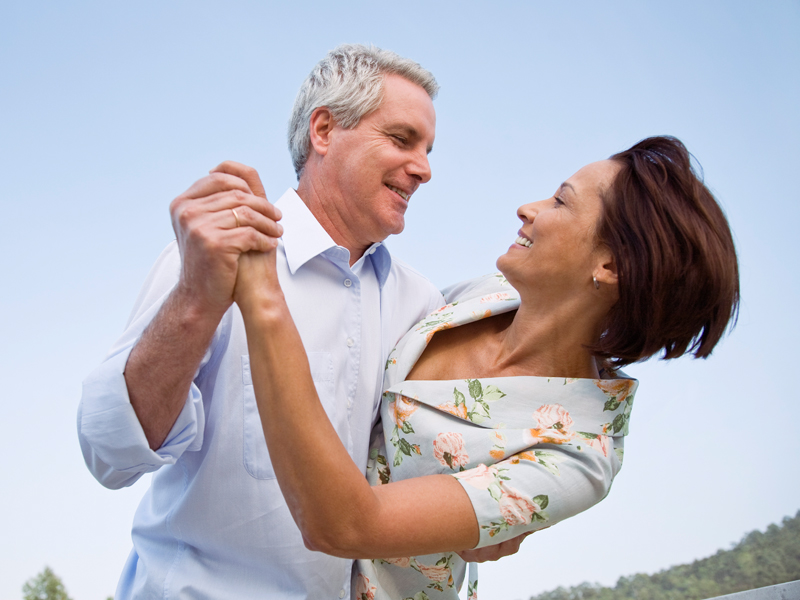A group of Virginia Beach, Virginia, seniors joined the Internet meme fun by posting their own version of The Harlem Shake dance sensation. With costumes and props, including a cane, hula hoop, umbrella, electric guitar, feather boa, wigs, witch hat and a giant stuffed butt, the group is obviously having fun. But with a display like that, can you take dance fitness seriously?
“I have seen amazing progress in students’ health and personalities, as well as their outlook on life,” says Marquita Bianca, owner and director of BailaFuzion Dance Company. She’s directed Dancing with the Seniors—a dance education program—for three years and was the creative force behind the Harlem Shake video. Bianca teaches a free, eight-week class to people 60 and older, featuring ballroom and Latin and line dancing.
What the Studies Say
Studies show that dance has cardiovascular advantages, like other types of exercise, but seniors benefit in other ways as well. The directional changes improve balance and agility, which may decrease the risk of falling, and recalling dance steps can improve memory.
An article published in the Journal of Sports Science Medicine in 2011 examined the effects of dance exercise on the cognitive function of elderly people with metabolic syndrome. After six months, the exercise group outshone the control group on the verbal fluency and memory test. The study concluded that dance fitness also stimulated emotions and promoted social interaction more than other types of exercise.
And many folks, inside and outside of scientific studies, report that dancing simply makes them feel good.
Bianca sees a real zest for life in her students. “They are vibrant, look forward to the golden years, but still want to seize the day,” she says. “And why shouldn’t they?”
Seize the day by getting out there on the dance floor.
Types of Dance
So what type of dancing should you choose? Anything low-impact will be gentler on the joints, especially if you suffer from conditions like osteoarthritis. Other factors to consider include what kinds of music you enjoy, whether you prefer to dance with a partner or solo and what options are available in your area.
Grab A Partner
- Swing: Fast-paced to big band era jazz
- Square dancing: A caller calls out the moves over fiddle music
- Ballroom: Waltzes, fox trots and other classics
- Salsa: Quick moving hip and foot work to Latin beats
- Folk: Dances and music from around the world
Fly Solo
- Line dancing: Choreographed dancing in rows, usually to country music
- Ballet: Barre exercises and step combinations to classical music
- Belly dancing: Middle Eastern music with hip and belly movements
- Tap: Metal taps on the soles of your shoes make syncopated sounds, often done to jazz or Broadway tunes
- Zumba Gold: Low-impact form of the popular dance fitness program, done to upbeat Latin music

